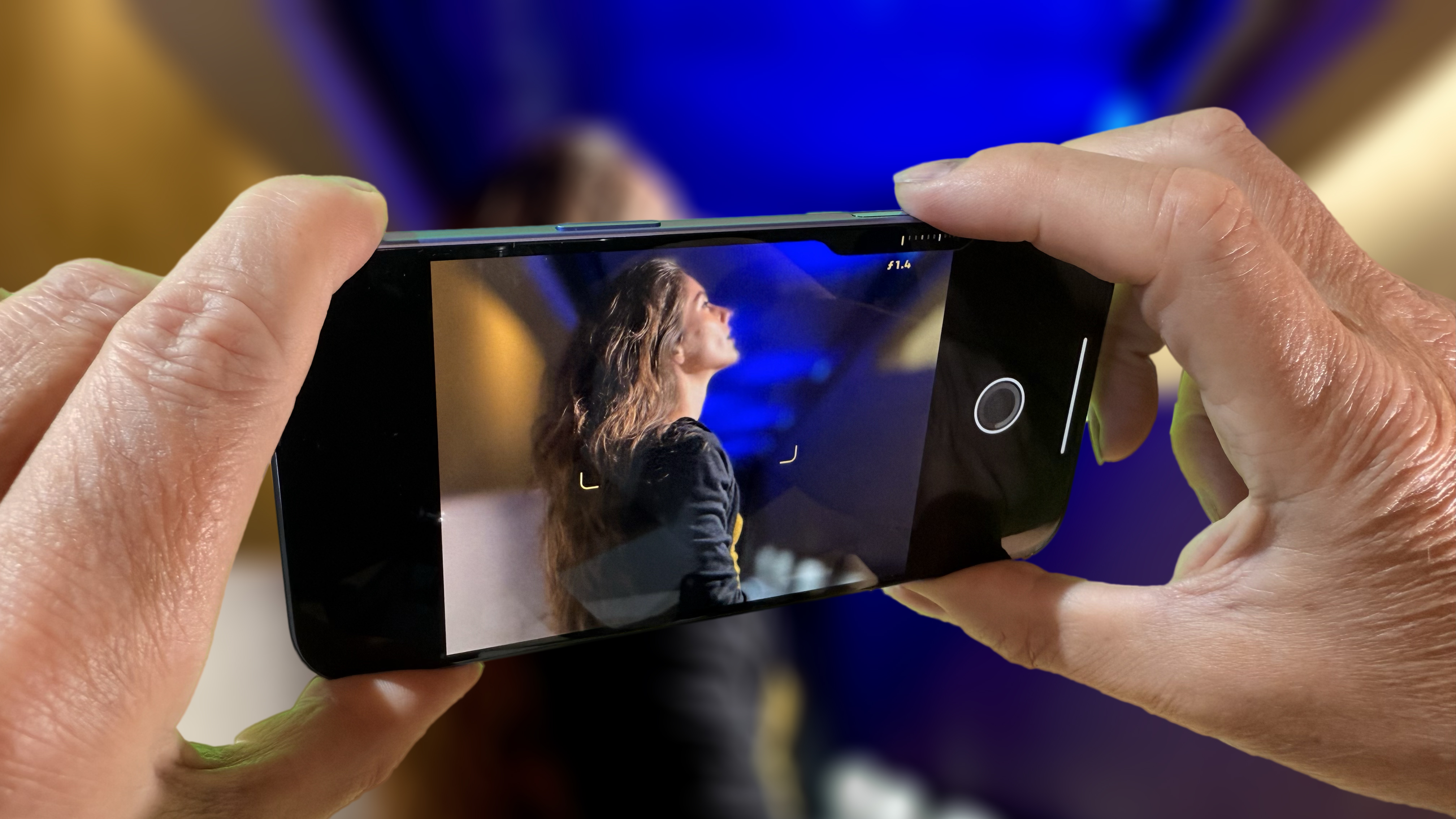
Apple’s iPhone 16 range comes in four models - the iPhone 16, the iPhone 16 Plus, the iPhone 16 Pro, and the iPhone 16 Pro Max. The beauty of the iPhone 16 Plus is that it boasts the second largest Super Retina display in the range at 6.7”, but it costs less than the iPhone 16 Pro (with its 6.3” display) and the iPhone 16 (6.1”). The iPhone 16 Pro Max continues to dominate in display size (6.9”), but that is reflected in its heftier price. So if you’re looking to get a balance between budget and screen size then the iPhone 16 Plus is well worth considering.
Normally I’m an iPhone Pro Max user and have just about paid off my loan for my 14 Pro Max. Apple where kind enough to lend me an iPhone 16 and a 16 Plus for this review. Compared to my 14 Pro Max the iPhone 16 felt tiny, which made me feel a bit inadequate when testing its camera capabilities with a professional model! However the larger iPhone 16 Plus felt more like my Pro Max, so it took the lead in my iPhone 16 and 16 Plus model test shoot. If you’re interested in the smaller iPhone 16, check out my review to get some insight into the pros and cons of shooting models with an iPhone have a gander at my opinion piece.
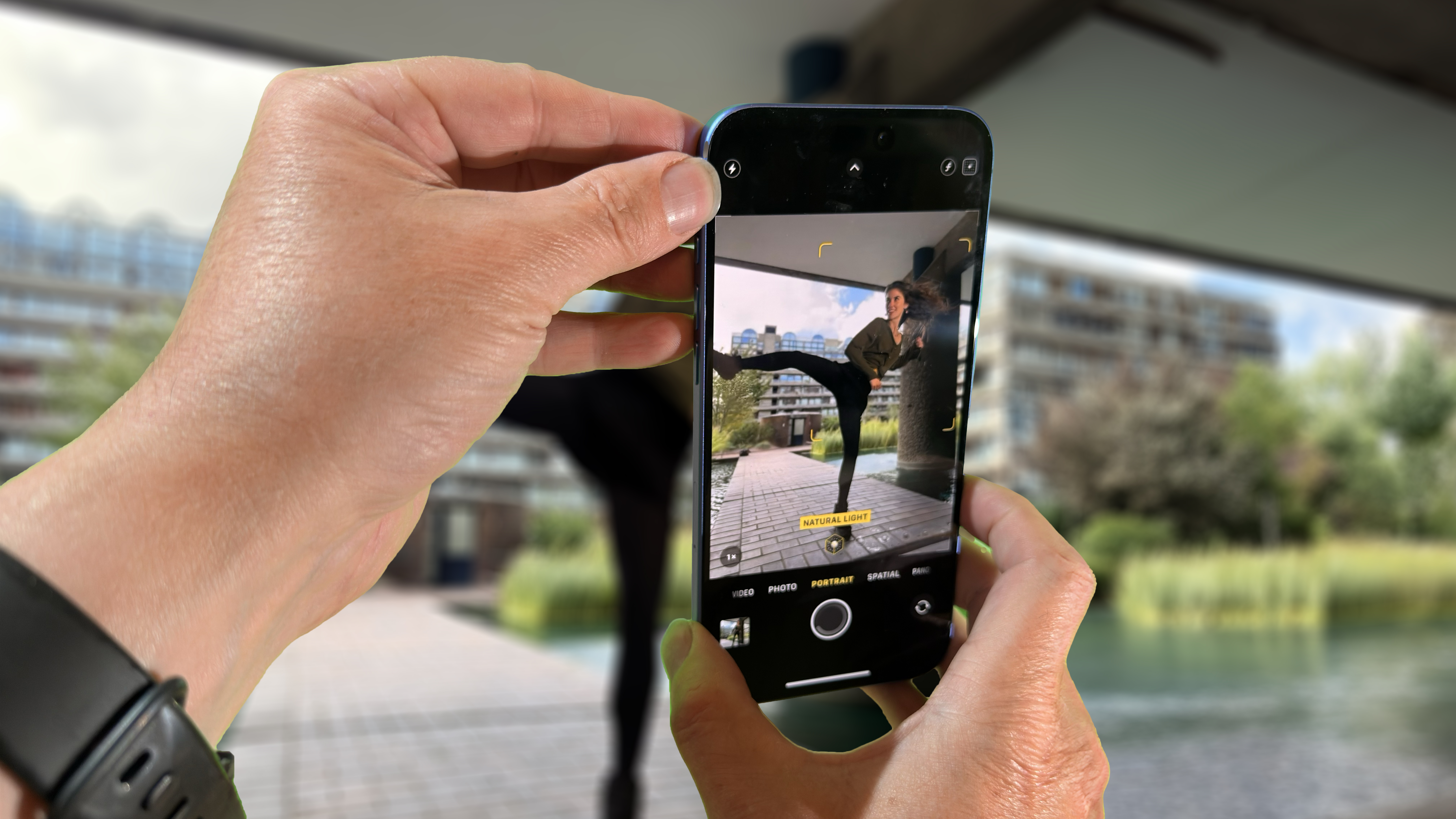
Apple iPhone 16 Plus: Specifications
Apple iPhone 16 Plus: Design & Handling
In my intro, I talked about the size of the iPhone 16 Plus' display and how it’s the second largest display in the iPhone 16 range. Indeed the display looks even larger due to the smaller bezel on the front of the device, enabling the 6.7” screen to spread almost to the edge of the iPhone. Of course, size isn’t everything and the iPhone 16 Plus lacks many of the photographic features that make the iPhone 6 Pro Max the king of the iPhone 16 range. For starters, the iPhone 16 Plus only has two cameras on the front, compared to the Pro and Pro Max’s three cameras. This means the Plus can only optically zoom in to 52mm using its 2x camera (compared with the 16 Pro’s 5x 120 mm optical zoom). You can shoot up to 48MP on the 16 plus but only using the 1x Fusion camera. Ultra Wide, Night mode, and flash photos will always be saved at 12 MP.
The biggest limitation of the iPhone 16 Plus as a pro camera is its inability to shoot in ProRAW. It saves files as either JPEG or HEIF. HEIF files are very lightweight (in comparison to an info-packed ProRAW file) and I’d normally never consider shooting in that format, but you need to shoot in HEIF if you’re going to enjoy applying the new range of Photographic Styles to your shots. More on those later. If you want to post-process RAW files in Lightroom or Photoshop Camera RAW then you’ll need to get hold of an iPhone Pro model.

There are a couple of other cool new design features to highlight. The iPhone 16 Plus replaces the 15 Plus’s Ring/Silent button with the Action Button that was introduced with the 15 Pro models in 2023. The Action button can be customized to trigger the Torch, open the Camera app, capture a Voice Memo, and of course toggle between Silent/Ring (amongst other functions). More excitingly there’s a new Camera Control button diagonally opposite the Action button that makes the iPhone 16 Pro behave more like a traditional camera. I’ll talk about this important new Camera Control feature in great detail in the Performance section of this review. Plus you can see it in action in my supporting video.

Another big addition to the iPhone 16 series is a new generation of Photographic Styles. Older iPhones enable you to tap the Photographic Styles icon in the Camera app and swipe to choose between Standard, Rich Contrast, Vibrant, Warm, and Vibrant Warm. You can also customize each Style to change its look by tapping on Warmth and Tone and then adjusting a slider.
The iPhone 16 has 15 new Photographic Styles that are much easier to fine-tune to create a wider range of moods and looks. For example, when shooting a model dressed in 1960’s gear I used the Quiet Photographic Style to get warm colors and faded tones that complemented the retro subject matter. Every Photographic Style is non-destructive, so you can remove or fine-tune the look in iOS or macOS Photos.
You can pick up an iPhone 16 Plus in five colors - Ultra Marine, Teal, Pink, White, and Black. When offered the choice I went for the Ultra Marine variant and was given a matching Apple case to keep it safe. I normally go for Black, but I found Ultra Marine rather eye-catching!
Apple iPhone 16 Plus: Performance
To test the iPhone 16 Plus I popped down to my usual test shoot location - the Barbican Centre in the City of London. I met up with Bella the model (@bellatrixortreat2) who had contacted me about doing a shoot after I was recommended to her by a modeling colleague who I’d shot previously - also using an iPhone.
After shooting Bella I discovered she had nearly 60,000 followers on Instagram, so I might have been a bit intimidated by getting her to pose for an iPhone rather than a DSLR/mirrorless camera if I’d known her ‘celeb’ status! As you’ll see from this review’s stills and supporting video we had a great shoot. Bella was happy enough with the results to share some on her feed!
During my shoot with Bella, the iPhone 16 Plus’s new Camera Control button was a game changer. As well as enabling me to fire up the Camera app in a long-press and then snap a shot with a second long-press it did much more. The button is also touch-sensitive, so you can long-press, short-press, and swipe it to summon camera functions such as Exposure, Depth, Zoom, Cameras, Styles, and Tone. You can also swipe the Camera Control button to control the various properties of each setting, such as the aperture value in Depth or the contrast of a shot in Tone.
When shooting portraits of Bella I enjoyed swiping to the Depth setting and then sliding my finger on the Camera Control button to shoot between a range of f-stops, from f16 to f1.4. Initially, the background bokeh didn’t change as I adjusted the aperture value using the Camera Control button. But when I switched to shooting in Portrait Mode I could see the bokeh changing like it would if adjusting the aperture value on a DSLR.
iPhones can shoot a natural bokeh if you’re close to the subject and in low light (forcing a wide aperture), but the computer-generated bokeh produced by the Camera app’s Portrait Mode used to be a bit clunky, with sharp background details appearing behind complex areas such as a model’s hair when they should have been blurred. Thanks to improvements in software the bokeh in stills is now pretty convincing, but when shooting video in Cinematic mode the blur around the edge of the model’s hair was still a bit inconsistent.

It did take me a while to master the light-press action that summons the Camera Control button’s various settings, but this new hardware design feature did provide a more tactile and intuitive way for me to interact with many of the Camera app’s settings. My Digital Camera World colleague Basil Kronfli found that the Camera Control button on the iPhone 16 Pro Max was so flush with the phone body that it was hard to locate it “with a feel”. This is a fair point, though I had less of an issue with it. I shot with the iPhone 16 Plus in an Apple case and this made the Camera Control button easier to find. The case is rubbery and the Camera Control button on the case is smooth. This contrast in texture made it easier for me to locate and interact with the Camera Control button on the iPhone 16 Plus case.
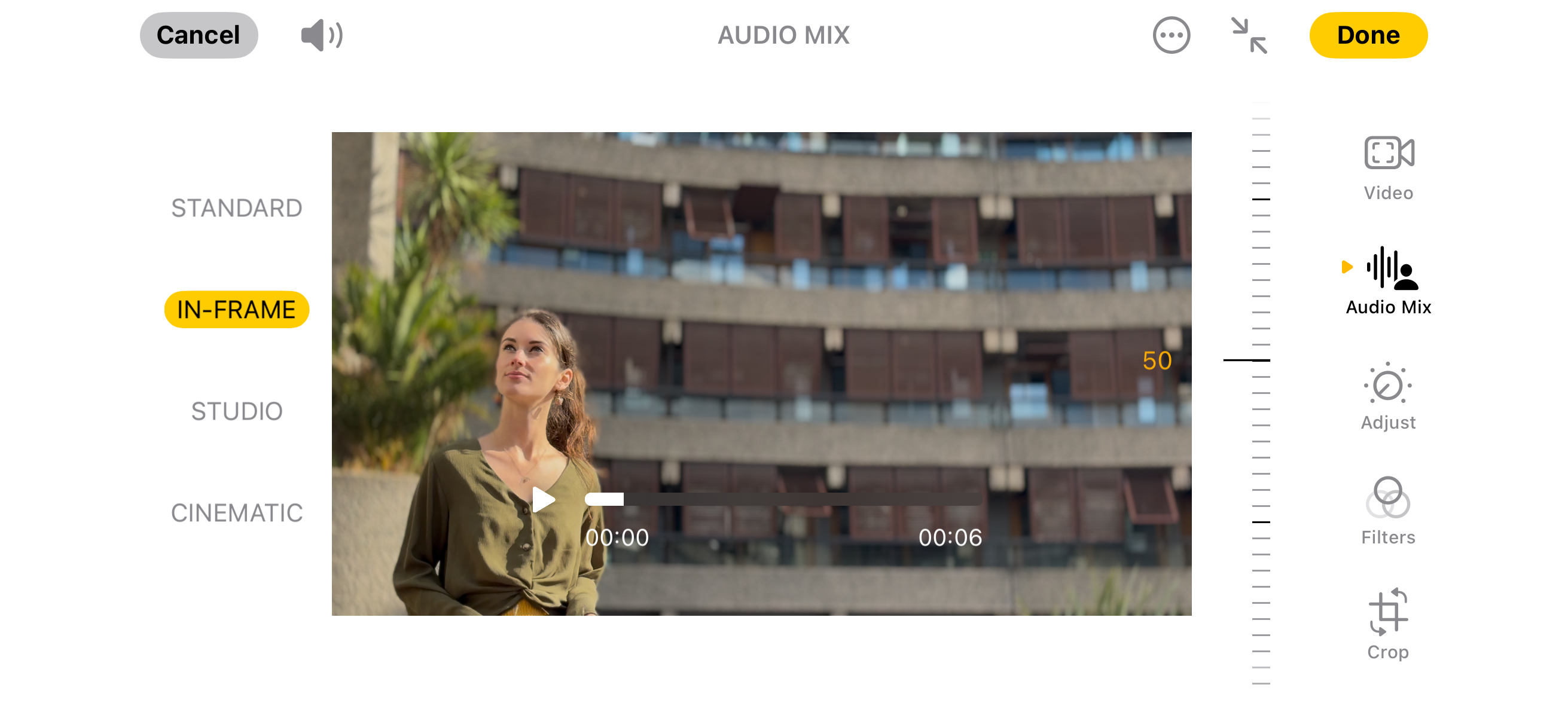
The Barbican Centre has many indoor locations so I was able to test the iPhone 16 Plus in a range of lighting set-ups. I’ve found that in low light older iPhone models could produce pixelated/noisy-looking results. Shots in the same dark locations looked much sharper, cleaner, and more free of artifacts on the iPhone 16 Plus, though I was using a handheld LED to provide a ‘modeling’ light to help accentuate Bella’s facial features (and add a bit of drama to the subject). As a side note, Bella brought a friend - Max - along to the shoot and he was invaluable at positioning the Smallrig RC 60B COB LED to get a range of striking results as you’ll see from our images.
One area that the iPhone 16 Plus (and the iPhone 16) struggled in was shooting slow-motion shots while I was recording the screen. I tend to use the Screen Recording feature during a shoot so that I can share the Camera app’s settings in my magazine tutorials and reviews. However, when Screen Recording was active the 240 fps HD Slo-Mo clips played back rather jerkily. After turning Screen Recording off new slow-motion clips played back super smooth. I appreciate that this is probably only an issue for me as most people won’t be using Screen Recording when filming slow-motion clips, so it's not a major niggle.
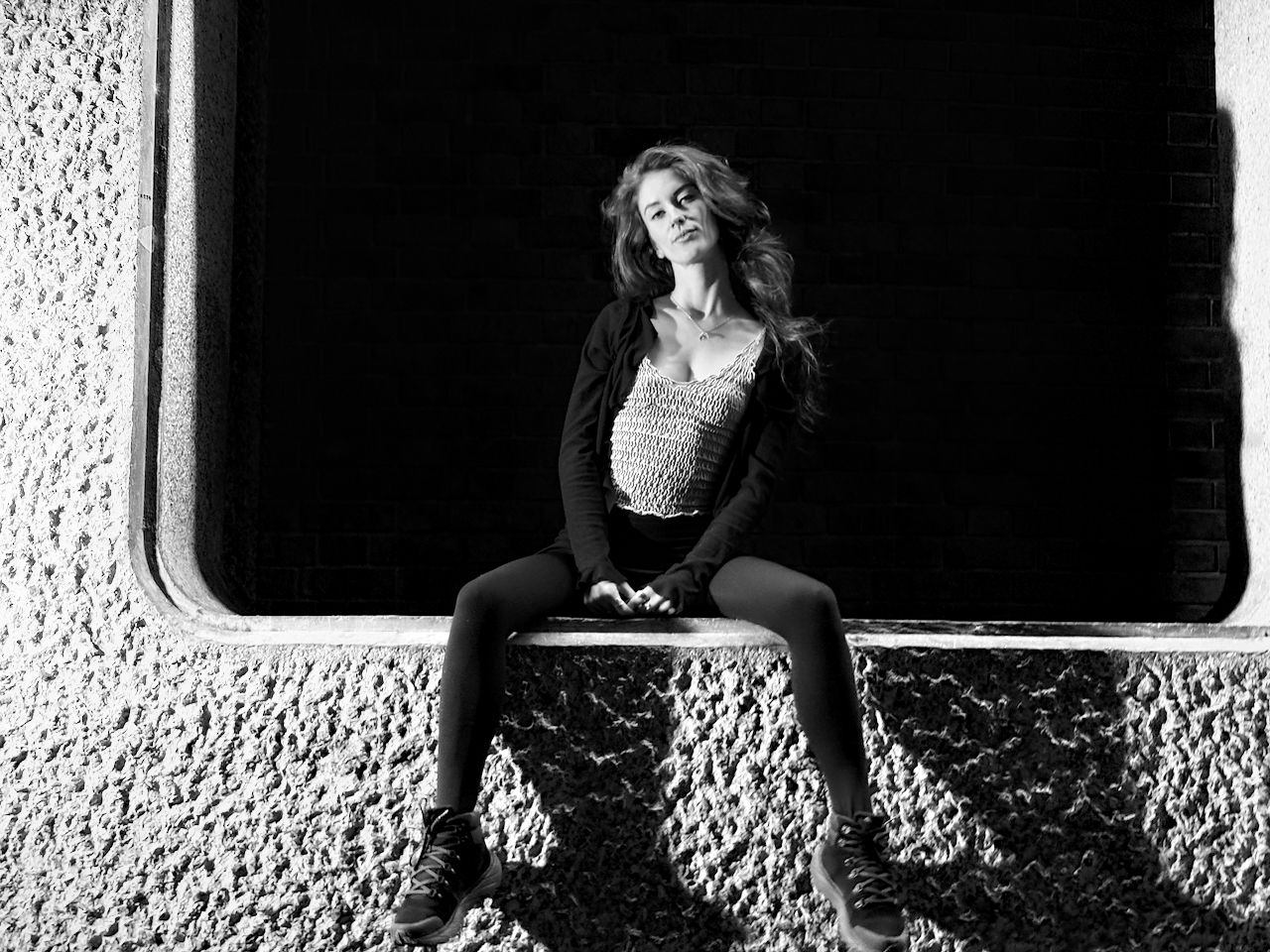
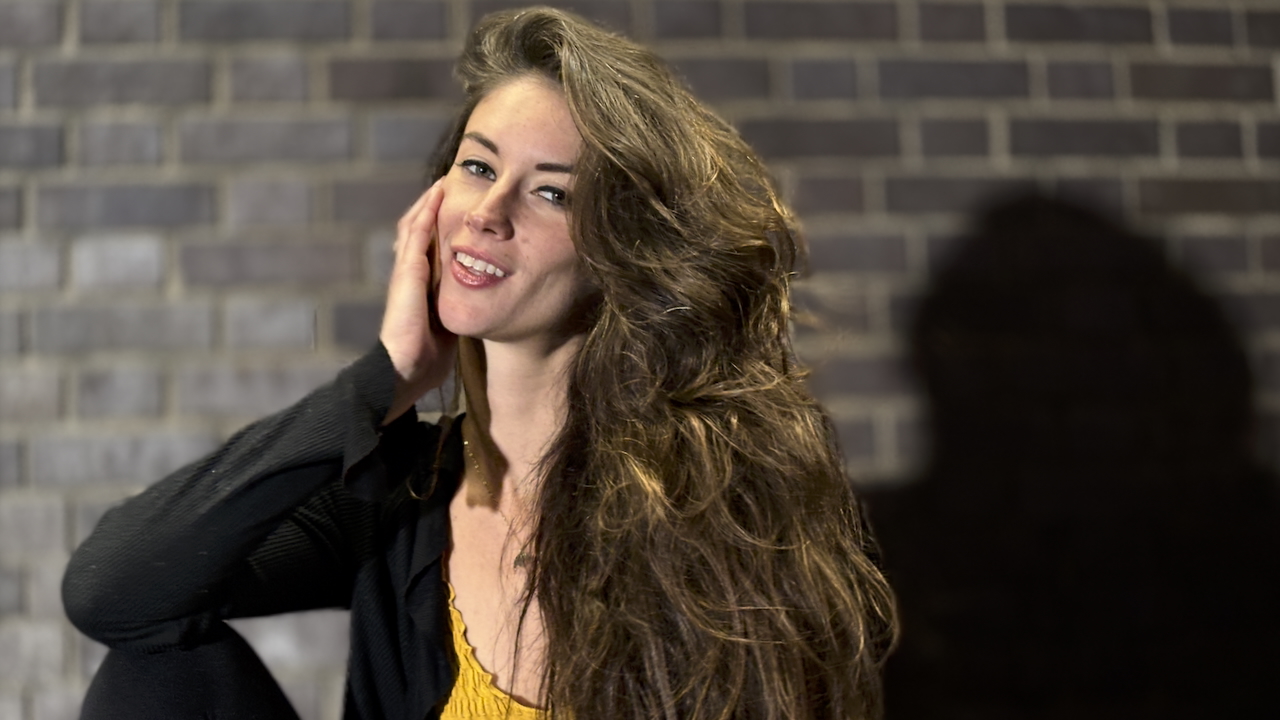
Apple iPhone 16 Plus: Verdict
If you’ve owned an older iPhone Pro Max but can’t afford to upgrade to a 16 Pro Max, then the iPhone 16 Plus’s generous 6.7” display will make you feel at home and you’ll be less shy using it on a pro shoot (compared to using a smaller and cheaper iPhone 16). However, a Pro or Pro Max user will feel like they’re taking a step back due to the iPhone 16 Plus’s lack of a powerful optical zoom and its inability to shoot in ProRAW.
If you plan to populate your social media feed with stylish images and don’t want to spend time editing then the iPhone 16 Plus’s Photographic Styles will be perfect. The 15 styles provide a wide range of moods and looks and you can fine-tune them before you shoot in the Camera app or tweak them in Apple’s iOS or macOS Photos app later. If you’re a blogger then you’ll benefit from using the powerful new Audio Mix tools to capture better-quality sound straight from the iPhone, so you don’t always need to plug in an external wireless mic kit.
✅ Buy it...
- You need to improve audio production values
- You want to change a photo’s look quickly and non-destructively
- You need a more tactile way to adjust camera settings
- You need a bigger display than the iPhone 16
🚫 Don't buy it...
- Need to shoot in ProRAW
- Need a stronger optical zoom than 52mm







